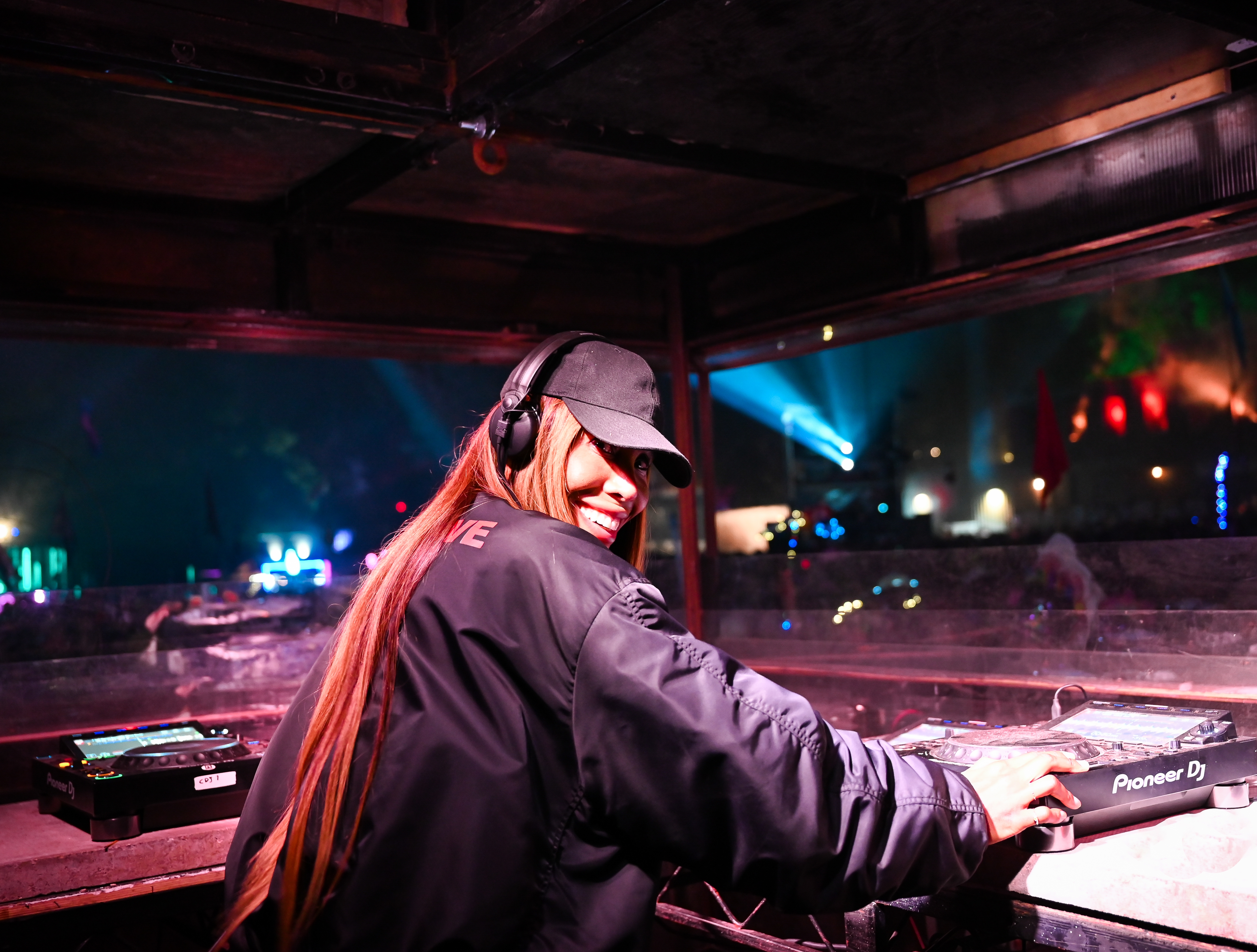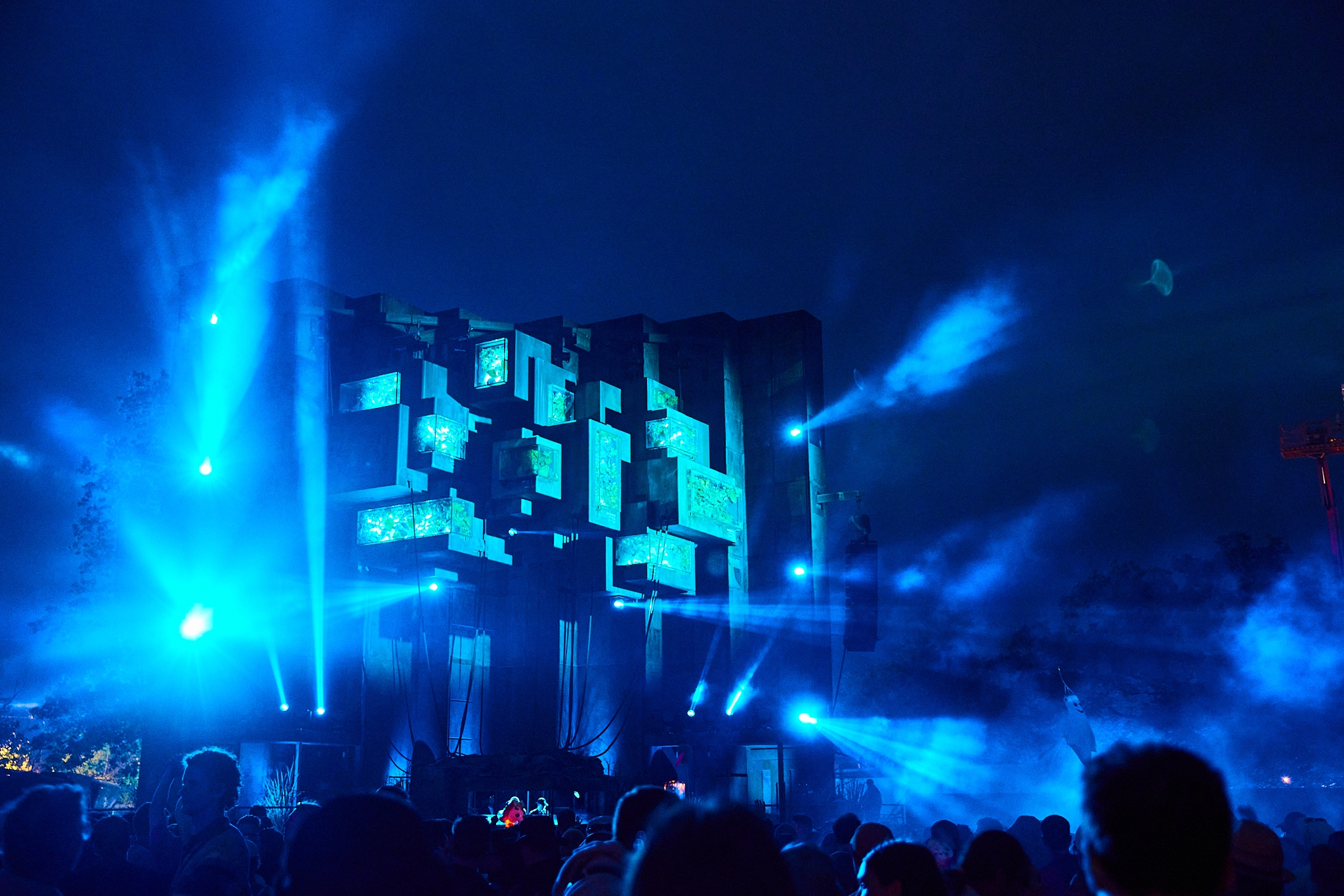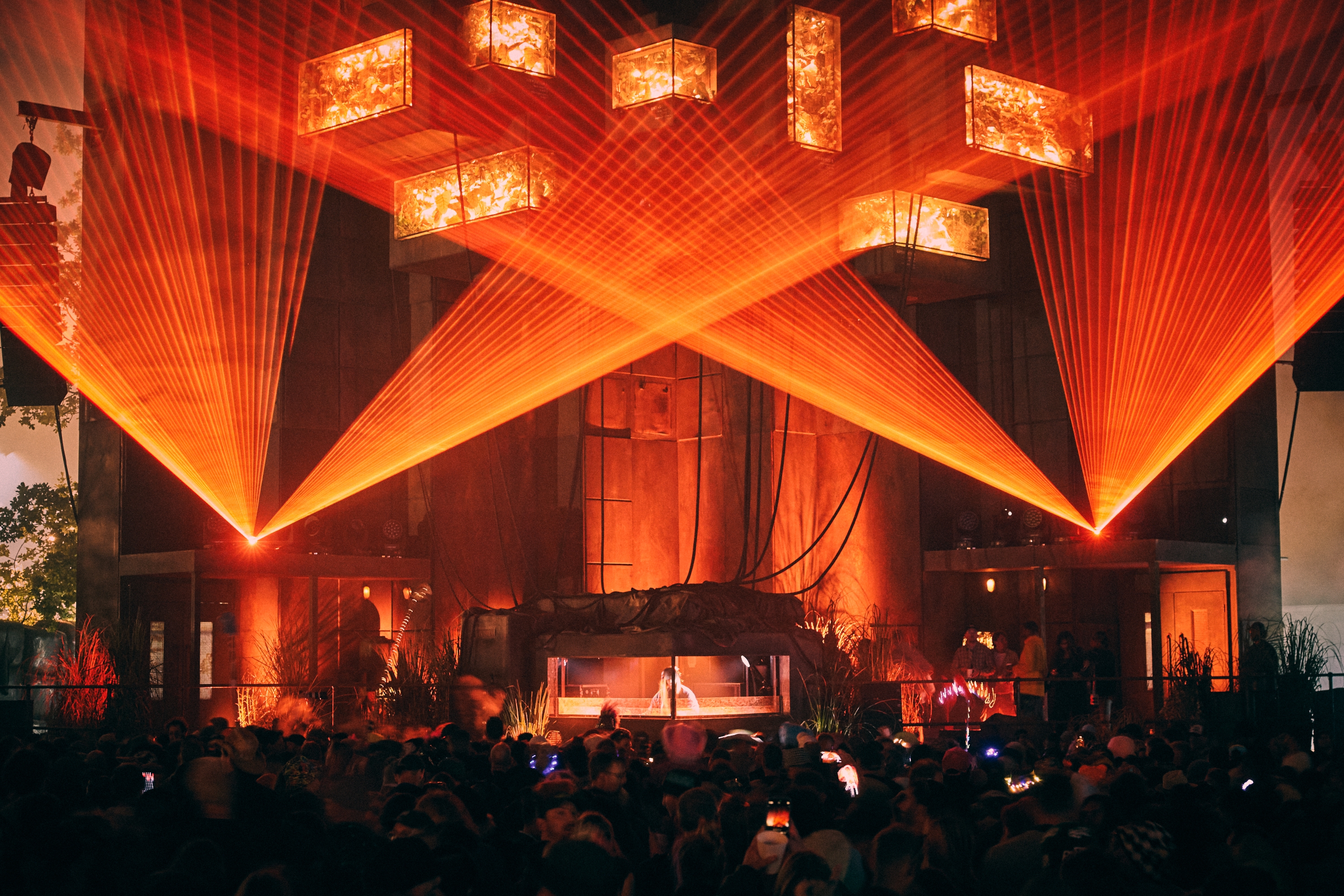 Features
Features
Return to Genosys: The comeback of Block9's post-apocalyptic spectacle
Block9's beloved brutalist behemoth returned for Glastonbury 2024, Megan Townsend speaks to co-creative director Stephen Gallagher to find out how his team overcame rain, damage and COVID to bring Genosys back in all its dilapidated glory
It’s a week until gates open, though the work for Block9’s stage builders has already been at hand for some time — while many of us looked on anxiously at weather reports in the build-up, praying that the historically wet conditions of June would let up in time for this year’s Glastonbury, the rain has presented a different set of problems for Block9's co-creative director Stephen Gallagher. “We’re trying to limit our movements. The ground can’t get too muddy ahead of [next week], but you know what?” he tells me, before grabbing his phone and showing us the hopeful blue tinge of the sky outside his porto-cabin in the South East corner. “It’s looking alright.”
The undertaking of creating Block9's iconic structures is already a high-pressure job for this team — having weeks to erect the iconography of IICON and a fully-fledged nightclub by way of NYC Downlow (and the newly-expanded Meat Rack), but 2024 has presented an additional challenge for the naughty corner purveyors, as for the first time since 2019 the beloved Genosys structure will be returning to the field. The towering stage production, which consists of a grouping of grey blocks set against an angled concrete-like scaffold, was a favourite of Glastonbury-goers from when it was first erected in 2013, designed to resemble a "relic of a machine in an imagined future, built in a last-ditch attempt to save the atmosphere of the planet," according to Gallagher. Described as "an imposing structure that looks like the lair of an aquatic villain with huge glass tanks illuminated by cold blue hues," by Mixmag. The colossal, retrograde glory of Genosys made it a standout for the naughty corner faithful, managing to evoke a nihilistic, free party atmosphere with its dilapidated facade while simultaneously packing in the spectacle — from its intricate light show and hulking presence.
Read this next: “NYC Downlow’s slutty little sister!”: Why The Meat Rack was bigger and better than ever in 2024
"The plants that hang over it are supposed to be what it would look like if humans harvested plants and incorporated them into the structure to generate oxygen. So the idea is, that a DJ takes the helm of this decrepit old machine. It's insane," he laughs. It's with a hint of dramatic irony then that the same air of degeneration — that made the Genosys structure a favourite of Block9's crowds, organisers and DJs who managed to take over its mechanisms — is what led to the team being forced to take it out of action when Glastonbury returned in 2021 after a two-year hiatus for COVID-19.

"Normally each year we wrap up the 'pods' as we call them, and put them into storage," Gallagher says. "They only have to last 12 months over the winter and then we can do minor repairs, put it back together and reinstall it on the festival site. But with COVID, it ended up being around three years, and they needed a lot of TLC — we didn't have the manpower or the budget to get them back together again in time for the festival in 2022. The cost of materials had risen, post-pandemic it was difficult to do anything really." Instead, the team installed Genosys Sound System in its place, a converted bus that paid tribute to the caravans that carted ravers around the country for the infamous free parties of the '90s — such as Castlemorton Common Festival in 1994, widely believed to be the point of no return for the introduction of the 1994 Criminal Justice And Public Order Act.
Read this next: How oppressive policing has eroded rave culture
Though Genosys Sound System had been a success — with Mixmag's Patrick Hinton even crediting it as "setting an example for what festivals should aim to achieve: have so much fun it makes you dream of a better world" — when it returned once again in place of Genosys the following year in 2023, many wondered if this spelled the end of the post-apocalyptic wonder, though Gallagher assures me, plans had always been in motion to bring it back in some form. "We'd always wanted it back," he says. "I think the whole team have a soft spot for Genosys. Then last year, we showed round Nick Dewey [the husband of Glastonbury organiser Emily Eavis] and he was like 'yeah, the bus is good. But it feels like we're lacking in that corner. If you could, would you bring Genosys back?' And here we are."


As soon as the gates closed, and Glastonbury 2023 was wrapped, Gallagher and his team brought the "pods" to a barn on-site to begin its restoration — stripping away its exterior and rebuilding the steel work beneath. "It's been a long process," he says. "While we've been working on programming, budgets and planning, we've also been repairing Genosys' components. It takes a big effort, it's a massive structure, it's 6-7 tonnes of boxes, with full force structural beams which isn't easy to construct. Then even after getting it on site, we have to start the scenic work, repainting it, and dressing it in plants, lights. We've had to try and use some muscle memory to remember how it looks," he laughs.
Read this next: DIY defiance: Genosys Sound System brought the spirit of ‘90s rave to Glastonbury
For 2024, Genosys brought back its high-tech projection mapping array that had been installed in the years leading up to COVID — something that only adds to its otherworldly presence; technology that it pioneered, at least in regards to its creative use at festivals. As I take in a set from Honey Dijon, the combination of the lighting and projections transforms the structure into a mind-boggling experience — giving the feeling that its "pods" are moving and switching in time to the music. It's a purposeful choice, with Gallagher's team having put a focus on making the physics of Genosys change to bleary-eyed crowds. "It means we can make 50 tons of concrete, steel, and glass look like its wobbling and vibrating with the music. It makes you feel like you're tripping on acid, even if you haven't taken anything. I love it, I love the subtle use of it as well — where you have all the lighting and the lasers and projection mapping working in perfect harmony. We want people to be flabbergasted [by it]."

It must have been challenging then to resurrect a structure that is so fondly remembered by Block9's crowds and give the same energy and feel it once held — though despite a slight change in the angle of the DJ booth, when crowds encounter it for the first time on Thursday as Block9 opened for business, there's a glint of recognition in everyone's eyes. Those familiar with the draw of Genosys stop to take pictures, while others pause at the field's entrance to take in its expanse. I ask Stephen what has changed for the stage this year, and while he admits there has been "a full overhaul," he insists the "feel" is the same.
"Genosys is great because it gives that bit of something different to the field. You can move between the sort of immense spectacle that is IICON, and then head over to Genosys for a breather and you have some proper dirty rave tunes on," he laughs. "I think it presents a challenge to artists too. This stage has its own vibe, its own sort of personality, and it has its own aesthetic It is a semi-futuristic, semi-ancient machine — you can't see the artist as much because they are built into it, so it's about the physical presence of the stage itself, rather than looking at who is playing within it. That was always the desired outcome."
Megan Townsend is Mixmag's Deputy Editor, follow her on Twitter


